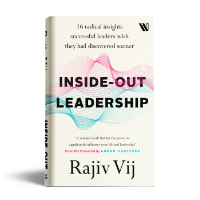
The human body and mind are a microcosm of the universe. Just as different aspects of nature (sunrise, sunset, birth, death) need to be in balance, the human body and mind need to stay aligned to their natural rhythms to operate optimally. Our body works on the principle of homeostasis. Different bodily functions have to be in equilibrium for an optimal functioning of the whole. This requires appropriate levels of body temperature, body fluids, mineral and salts, blood sugar and so forth. If any of these go out of balance, we become ill.
Likewise, a key condition for an optimal experience of life’s journey is a healthy balance in different aspects of our being. This also means creating balance in our various life goals and pursuits. According to ancient Vedic scriptures, human beings have four aims in life. What makes a good life is living these aims in a healthy balance. That allows us to experience the sweet spot of life.
Artha
Artha is the essential building block of life. It represents the pursuit of earning a livelihood and gaining financial security. It is symbolic of our worldly life. In the absence of Artha, it can be more challenging to fulfil the other three goals. All the same, Artha discourages against single-mindedly hankering after materialistic life. It promotes engaging in meaningful work and learning to be content.
Kama
Kama is the pursuit of fulfilling our desires. It refers to both sensual pleasures as well as the creative and aesthetic experience of life including beauty, love and wonder. A healthy level of Kama is necessary for life. In fact, it’s essential for the pursuit of Dharma and Moksha (the desire to do the right thing and follow the path of spiritual self-realization).
Kama is an important aim as long as it does not conflict with the quest of the other three goals. However, an excessive pursuit of Kama, through money, power and pleasure, can lead to greed, addictions and undue sensual attachments.
Dharma
Dharma is about being righteous, about doing the right thing. This entails discovering and consciously pursuing our life’s deeper purpose – the unique and special reason we were born on this earth for. The purpose that expresses our nature and serves society in some way. One that furthers our evolution as a human being.
Doing the right thing requires us to play all our outer roles (as a professional, parent, child, neighbour, citizen) with a great sense of duty and commitment. This includes doing right by others and the world, including the environment. Dharma further asks that all along, amidst all our actions, we remain mindful of our inner and deeper purpose. Such alignment makes life more effortless and less stressful.
Moksha
Moksha stands for nirvana, the true spiritual liberation. It represents complete self-realization of our true nature – one of eternal awareness. We then not just intellectually know, but fully experience ourselves and everyone and everything around us as that same awareness. Moksha is the freedom from the ignorance of our egoistic self. Engaging with spiritual teachings and cultivating a healthy level of detachment, from outcomes of our actions, makes a good start towards this goal.
The Sweet Spot
While all the four are key aims of life, there is an inherent hierarchy among them. Artha being the most basic and Moksha the most evolved. The sweet spot of life exists in finding the right balance between these aims at different stages of life. When we are younger, perhaps we can have a greater emphasis on Artha and Kama and as we grow older it can shift towards Dharma and Moksha. Having said that, these aims are not intended to be lived sequentially. While our prioritization among the four aims can shift, we must be conscious of all four at all stages.
If we feel our life is out of sync or we are experiencing any inner conflicts, it might be an indication that our pursuit of these goals is imbalanced. Pursuing primarily material goals with little regard to living our life purpose creates lack of fulfilment. Enjoying ourselves too much and not attending to our spiritual growth leads to inner emptiness. Following our life purpose but struggling to make a living generates anguish. Committing to a spiritual path but becoming obsessed about it creates undesirable attachment. Always serving others but not being compassionate towards ourselves dries up our reservoir of kindness. We need to find the optimal balance among all of this. That’s what facilitates experiencing the sweet spot of life.











 Personal Change and World Peace!
Personal Change and World Peace! Turning Mid-Life Crisis Into An Opportunity
Turning Mid-Life Crisis Into An Opportunity Life Lessons From My Seventeen-Year-Old!
Life Lessons From My Seventeen-Year-Old! For Deeper Peace: Reduce Not Negative Thoughts, But Thinking Itself
For Deeper Peace: Reduce Not Negative Thoughts, But Thinking Itself
Nice article.
While you mention that these are not sequential, the 4 are in line with the 4 stages (ashrams) of life – brahmacharya, grihastha ashram, vanaprashta, and sanyaas!
Wondering whether it is sequential or whether it is that each of these aims are more relevant and active during different stages of life anyways!
Hi Shiwani, good to hear from you and thank you for your comment. The four are not meant to be sequential, as it’s important to be aware of the larger goals (of purpose and self-realisation) at whatever stage of life we may be in. So we can choose the right work and at least be exposed to principles of detachment etc. even at an earlier age. Although our emphasis at different stages of life can change.
Beautiful Rajiv. The last paragraph is a true guide to check ourselves and to find out what is going wrong in our life.
Thank you.
Ravi
Thanks Ravi! Hope your wonderful work is going well.
In our scriptures they are referred to as Dharma, Artha, Kama & Moksha. The significance being that Artha should be earned in a Dharmic way and Kama should be for Moksha. If Kama is for Moksha, one will then end up spending the Artha that is acquired in a Dharmic way for the welfare of others. In my view if Dharma is not instilled right from the beginning, then it is very difficult to focus on it later. It is a way of life and hence has to get deeply ingrained right from a tender age and will be an eternal focus area.
Great point Sai! Thanks for adding that perspective!
Meaningful article Rajiv. Important to have a fulfilled life.
As your last para says about balance, it’s important to understand and live a fulfilled life without any regrets. I think, to some extent, courage and will power are required to strike a balance between these stages
Well said Hetal, thanks! Perhaps we can also add wisdom to courage and will power!
Lovely read..wondering if dharma is also about doing the right thing as per others..
It was rightful for Arjun to fight the battle of kurushetra that must not have resonated rightful with others .
Dharma is what is important (my calling) to me …is it not ?
Hi Ranu, thank you for your comment and insightful question. Dharma is about doing the right thing, clearly keeping in mind the welfare of others. Which means being judicious about following our calling and understanding how it serves others. When it gets to a serious inner conflict (like your reference to Arjun in the war), the teachings suggest we pursue what’s best for the whole and the larger right (in Arjun’s case, his Dharma being to fulfil his role of a warrior to correct the wrongs of society).
Hi Rajiv,
Couple of things that caught my attention outside the norm…. The way you seduce your audience (in a Dharmic way ) to click on the link is a lesson in marketing and sales!
) to click on the link is a lesson in marketing and sales!
The headstand is remarkable in so many ways. The backdrop looks like a simple renovation of a tsunami struck home that was ravaged exactly 10 years ago prior to this post. The man possibly had this very headstand as his “kama” – a desire to achieve. It must have taken him countless hours of imbalance and frustrations to get to this single pose of perfection. The beauty about this state of bliss and harmony is that he needed very little to make this happen externally but must have had a whole lot more that happened prior to this moment internally.
My point(s) being that we all hit that perfect sweet spot many times a day be it on a golf course, or in a board room, or during an early morning walk or in a bite of a freshly made Greek Salad…. The trick is to appreciate it, dwell in it (even if fleetingly) and be thankful. Once you start doing this life will automatically will be in balance.
Now onto being a bystander in a tennis match that hopefully sees my son hit the sweet spot enough number of times to take him to the next round!
Cheers and keep posting
That’s a brilliant commentary Vish! Loved your observation on the opportunity to be mindful of experiencing the sweet spot in small things and being grateful of those. Also, how the journey of pursuing the sweet spot is such an internal one.
Good luck with the match, enjoy trying to stay detached from the outcome